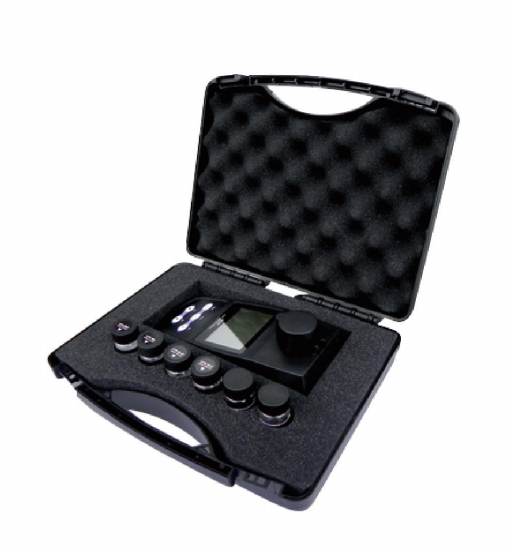The Essential Role of Turbidity Detectors in Safeguarding Clean Drinking Water
May 25,2025

The Essential Role of Turbidity Detectors in Safeguarding Clean Drinking Water
Table of Contents
- Understanding Turbidity: What It Is and Why It Matters
- The Importance of Clean Drinking Water for Public Health
- How Turbidity Detectors Work: The Science Behind the Technology
- Types of Turbidity Detectors: Choosing the Right One
- Applications of Turbidity Detectors in Water Quality Management
- Regulations and Standards for Drinking Water Quality
- The Future of Turbidity Detection Technology
- Conclusion: The Path to Cleaner Water
- FAQs About Turbidity Detectors
Understanding Turbidity: What It Is and Why It Matters
Turbidity refers to the cloudiness or haziness of a fluid caused by large numbers of individual particles that are generally invisible to the naked eye. These particles can include sediments, algae, organic matter, and microorganisms. High levels of turbidity in drinking water can lead to several serious consequences, including the spread of waterborne diseases and compromised water treatment processes. **Understanding turbidity** is essential for ensuring the safety of drinking water supplies, making turbidity detectors an indispensable tool.
The Importance of Clean Drinking Water for Public Health
Access to clean drinking water is a fundamental human right and a cornerstone of public health. Contaminated water can result in numerous health issues, including gastrointestinal infections, cholera, and other diseases. According to the World Health Organization (WHO), **nearly 2 billion people** use a drinking water source contaminated with feces, making the role of turbidity detectors in water quality management more critical than ever. By measuring the turbidity levels, we can assess the clarity of water and its suitability for consumption, ensuring the health and safety of communities.
How Turbidity Detectors Work: The Science Behind the Technology
Turbidity detectors operate on the principle of light scattering. When a beam of light passes through a sample of water, the particles in the water scatter the light in various directions. Turbidity detectors measure this scattered light to determine the concentration of particles present.
**Key Components of Turbidity Detectors:**
- **Light Source:** Usually a laser or LED that emits light into the water sample.
- **Detector:** A photodetector that receives the scattered light and converts it into an electrical signal.
- **Calibration:** Turbidity meters require calibration against standards to ensure accurate measurements.
The results are often expressed in Nephelometric Turbidity Units (NTU), providing a quantifiable measure of water clarity.
Types of Turbidity Detectors: Choosing the Right One
There are various types of turbidity detectors available, each designed for specific applications and environments. Understanding these types will help in selecting the right instrument for water quality assessment.
1. Portable Turbidity Meters
These handheld devices are ideal for field testing and provide quick results, making them perfect for environmental assessments and routine monitoring.
2. Online Turbidity Sensors
These sensors are permanently installed in water treatment plants and continuously monitor turbidity levels. They provide real-time data, allowing for immediate intervention if turbidity exceeds acceptable levels.
3. Laboratory Turbidity Analyzers
Used in research and testing labs, these analyzers provide high accuracy and are suitable for evaluating water samples in more controlled environments.
Applications of Turbidity Detectors in Water Quality Management
Turbidity detectors play a vital role in various applications related to water quality management:
1. Drinking Water Treatment
In drinking water treatment facilities, turbidity detectors monitor the effectiveness of filtration and disinfection processes, ensuring that the treated water meets safety standards.
2. Environmental Monitoring
Regular monitoring of turbidity levels in natural water bodies helps in detecting pollution sources and assessing ecosystem health.
3. Aquaculture
In aquaculture, maintaining optimal water quality is crucial for fish health. Turbidity detectors help aquaculturists manage water conditions effectively.
Regulations and Standards for Drinking Water Quality
Various organizations and regulatory bodies establish guidelines for acceptable turbidity levels in drinking water. In the United States, the **Environmental Protection Agency (EPA)** recommends a maximum turbidity level of **1 NTU** for treated drinking water, while the World Health Organization sets a guideline of **5 NTU** for drinking water quality. Compliance with these standards is crucial for public health safety.
The Future of Turbidity Detection Technology
Innovation in turbidity detection technology is ongoing, with advancements aimed at increasing accuracy, reducing maintenance, and enhancing real-time data analysis. Emerging technologies such as **machine learning and IoT integration** are paving the way for smarter water quality management systems that can predict turbidity events and automate responses.
Conclusion: The Path to Cleaner Water
Turbidity detectors serve as critical instruments in the quest for clean drinking water. By effectively measuring and monitoring turbidity levels, we can safeguard public health, ensure compliance with quality standards, and protect our ecosystems. Investing in advanced turbidity detection technology is not just about compliance—it's about ensuring a sustainable future for all communities.
FAQs About Turbidity Detectors
1. What is turbidity?
Turbidity is a measure of how clear water is, affected by the presence of suspended particles such as dirt, algae, and microorganisms.
2. Why is high turbidity a concern?
High turbidity can harbor pathogens and reduce the effectiveness of disinfection processes, posing risks to public health.
3. How often should turbidity levels be monitored?
Frequency varies based on regulations and local conditions, but routine monitoring is essential in treatment facilities and natural water bodies.
4. Can turbidity detectors be used outdoors?
Yes, portable turbidity meters are designed for outdoor use, making them ideal for field assessments.
5. What are the consequences of ignoring turbidity levels?
Failing to monitor turbidity can lead to unsafe drinking water, resulting in health crises and legal repercussions for water suppliers.
Investing in effective turbidity detection technology is a crucial step toward ensuring cleaner, safer drinking water for everyone.
Contact Us
E-mail :
andrew@genesit1.com
Phone:
+8615896508337
Address:
Chanhe Industrial Park,LuoYang City, Henan Province,China


